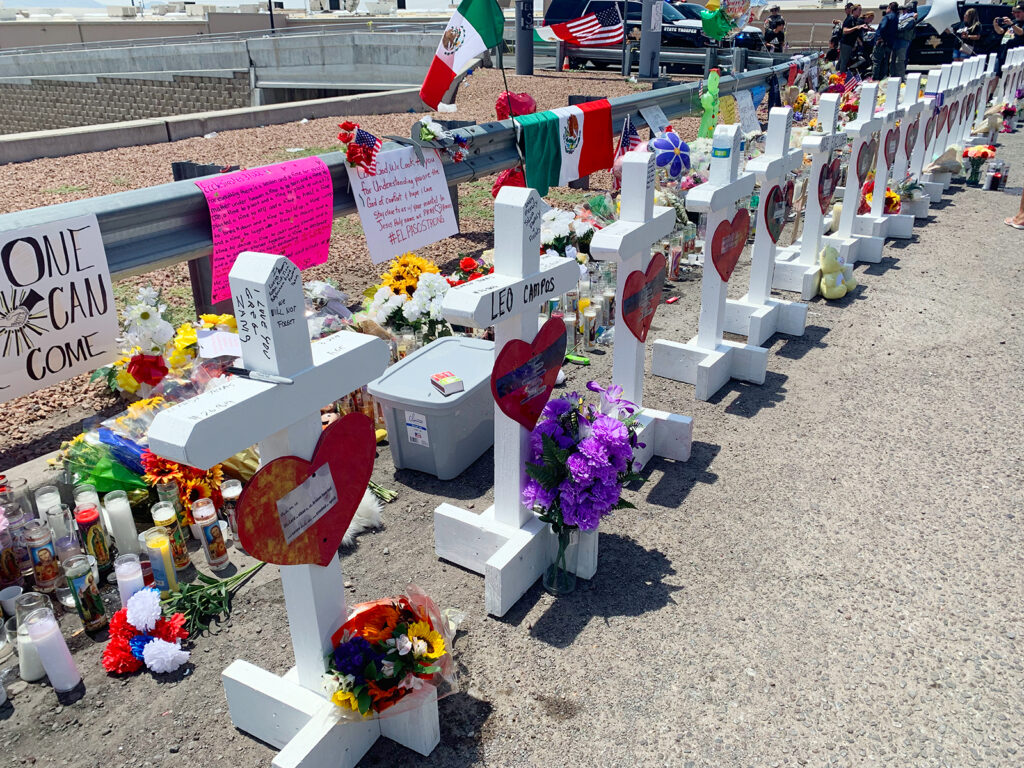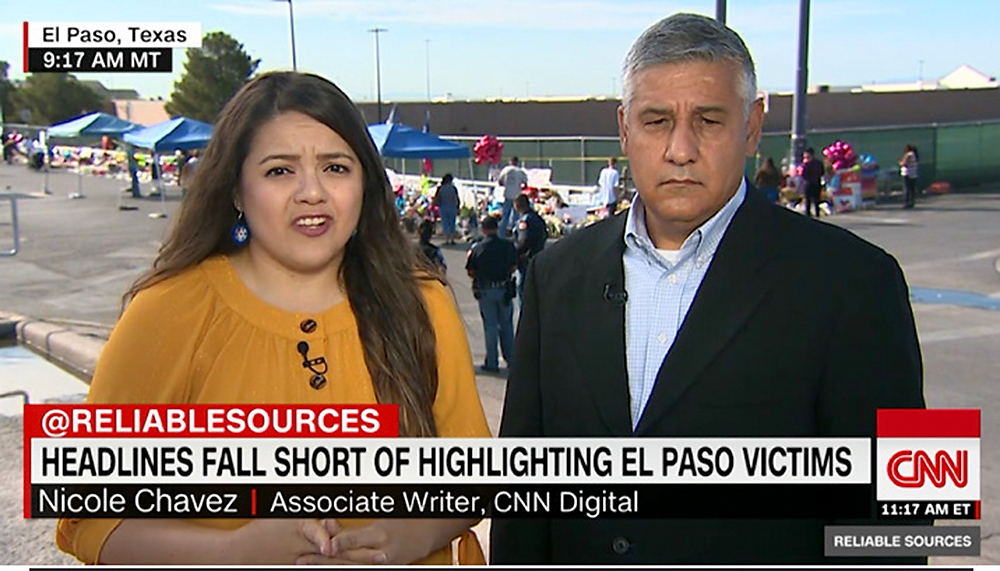‘My community is still healing:’ El Paso natives reflect on media coverage of massacre one year later

Jazmine Ulloa traveled to El Paso a year ago to tell the story of the hate crime that devastated her hometown.
On Aug. 3, 2019, a shooter killed 23 people in a Walmart in El Paso, Texas. A year later, Ulloa went back to the city she once called home to tell the story of the grief that still gripped the community. Their stories deserved to be told by people who understood them, Ulloa said.
Ulloa, a Boston Globe national politics reporter, wrote about the El Paso Del Norte International Bridge, or the Santa Fe, which connects El Paso with Ciudad Juarez, Mexico to mark the first anniversary of the El Paso shooting. She wrote that the shooting “reverberated on both sides of the bridge” after the man responsible, who drove from a Dallas suburb to El Paso, told police he was targeting Mexicans.
But as the ongoing coronavirus pandemic and protests for racial justice continue to dominate national headlines, some Latinos worry that the shooting’s anniversary has gotten lost. Among them is Julian Castro, former U.S. secretary of Housing and Urban Development, and Maria Teresa Kumar, president of Voto Latino.
For Daniel Borunda, a reporter for the El Paso Times, the limited coverage of the El Paso shooting anniversary is indicative of a bigger issue impacting the journalism industry. Local news budget cuts have resulted in people turning to national news outlets to learn about local issues, he said.
Borunda, who has been in El Paso over the past year, said he has seen how the community has struggled and grown since the shooting.
“You have coverage from people who are part of the community and understand what’s going on and tend to follow it throughout, rather than jumping in and then they take off,” he said.
A lack of Latinos in newsrooms also means that issues affecting Latino communities are sometimes overlooked, Borunda said.
“This is a very important story for the Latino community and the Mexican-American community,” he said. “When you have Latinos in newsrooms they’re able to pinpoint that out.”
For Alberto Perez, who lived in El Paso half his life and now lives in Seattle, the shooting was part of a shared struggle among people of color in America. He pointed to federal agents attacking activists protesting against racism and police use of force in Portland and Immigration and Customs Enforcement agents targeting immigrants along the Texas border.
“I hope that Latinx folks understand that this battle is all connected,” he said, adding that if media outlets didn’t write specifically about the anniversary, he hopes they’re extensively covering the movement for Black lives.
The narratives coming out of El Paso represent a microcosm of all the topics dominating national news, Ulloa said. To her, El Paso is the place to tell the country’s current story.
“All of these issues are intersecting right at the border,” she said. “I was looking at the many layers and impact of the shooting, the pandemic, the economic downturn, the national immigration battle. It was all there, all the major crises intersecting.”

The shooting in El Paso is one of the worst hate crimes ever committed against Latinos in the U.S. But similar targeted attacks have not stopped in the last year, said Nicole Chavez, an El Paso native who covered the shooting for CNN.

As a journalist, Chavez has reported on multiple mass shootings and anniversaries. She said she normally braces herself for those instances, but the El Paso shooting was different. It brought her a level of sadness and anxiety she had never felt before throughout her work.
“My community is still healing,” she said. “We have not forgotten about what happened.”
The El Paso shooting was one of 417 mass shootings reported nationwide in 2019, according to data from the nonprofit Gun Violence Archive. This means there were will be more mass shooting anniversaries in 2020 than days in the year.
It has been harder for El Paso to heal through the ongoing coronavirus pandemic. A year ago, people stood in lines to donate blood, they hugged, cried and supported each other as well as the families of the victims, said Daniella Págan, 22, a mother of two from El Paso and a student at the University of Texas El Paso.
Now, people must grieve six feet apart from each other.
Págan said one of the ways they have come together was by having a drive-by birthday celebration for a boy whose parents were killed by the shooter. The community will support him as he grows up, she said.
Local florists created statues of those killed, using moss and dry flowers, and community members built a memorial with luminarias to commemorate the shooting’s anniversary.
“We’re not going to let other cities forget about what happened to us here,” said Págan.
NOTE: This story has been edited to reflect the proper spelling of Daniel Borunda’s name.
April Rubin is a rising junior at the University of Florida, where she is majoring in journalism with a concentration in print and minoring in Latin American studies and anthropology. She recently finished a summer internship at the Miami Herald. At her school’s newspaper, the Independent Florida Alligator, Rubin has worked as a copy editor, a staff writer and university editor. Next academic year, she will be a managing editor. Reach her at aprilmariane [at] gmail [dot] com and on Twitter @AprilMRubin.